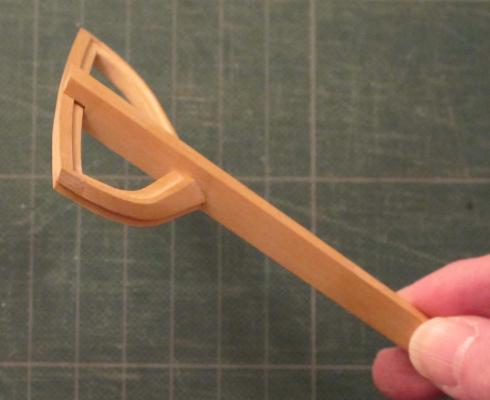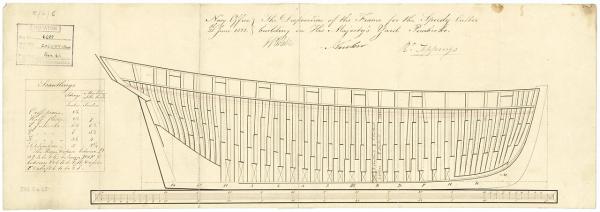-
Posts
13,268 -
Joined
-
Last visited
Content Type
Profiles
Forums
Gallery
Events
Everything posted by druxey
-
That is a terrific model and setting! I really enjoyed the sociological and sartorial history that you provided as well, Wefalk. Thank you.
-
Many folk make mast hoops by taking a rod of the right diameter and waxing it. Then they take planed wood shavings, coat them in glue and wrap them around the rod until the desired thickness is achieved. After the tube of wood is dry, suitable width pieces are sliced off.
-

The black stripe
druxey replied to SaturnV's topic in Building, Framing, Planking and plating a ships hull and deck
I agree with Russ. However, sometimes the first strake of planking above the wales was also painted black, the 'black strake'. -
Looking very nice indeed, Toni. I bet you are glad only one side is planked!
- 1,449 replies
-
Mark: thank you for your latest comments. I don't think the 'tall' pumps were intended to be worked by crews on both levels. The arrangement was merely to place the team on one set of pumps on the lower deck, the other on the middle deck. As the shafts of the brake pumps were almost in alignment, both sets could not be worked simultaneously at the same level.
-
Some Castello needs a neutralizing color in the mix to 'bring it down' in chroma (color) to match. A tiny amount of green or blue does the trick when you need it. Looks very good, Maury!
-
I agree that the fore octagonal (discontinuous) chambers on the Queen model's middle deck are simply guides for the chains to the wheel and cranks at that level. There is no intention of lifting water to discharge at middle deck level. The long octagonal tubes to the middle deck are the brake pump tubes. The above confirms the thesis that this arrangement of chain pumps increases manpower on them when required. QED!
-
Try mixing yellow ochre (oxide), a tiny amount of orange, and a small amount of titanium white or 'unbleached' titanium white to get the correct tone to match your wood.
-

Planking question
druxey replied to Daydreaming's topic in Building, Framing, Planking and plating a ships hull and deck
To plank a hull properly, some planks will have C- or even S- shapes. Look at the planking tutorials on this site. -
Love the washing, hanging out to dry! One presumes that this is only a drill.... Or is it cunning camouflage?
-
I've never heard of the 'plucked chicken' analogy before, but you are right about that! Your model is looking very good now, Toni.
- 1,449 replies
About us
Modelshipworld - Advancing Ship Modeling through Research
SSL Secured
Your security is important for us so this Website is SSL-Secured
NRG Mailing Address
Nautical Research Guild
237 South Lincoln Street
Westmont IL, 60559-1917
Model Ship World ® and the MSW logo are Registered Trademarks, and belong to the Nautical Research Guild (United States Patent and Trademark Office: No. 6,929,264 & No. 6,929,274, registered Dec. 20, 2022)
Helpful Links
About the NRG
If you enjoy building ship models that are historically accurate as well as beautiful, then The Nautical Research Guild (NRG) is just right for you.
The Guild is a non-profit educational organization whose mission is to “Advance Ship Modeling Through Research”. We provide support to our members in their efforts to raise the quality of their model ships.
The Nautical Research Guild has published our world-renowned quarterly magazine, The Nautical Research Journal, since 1955. The pages of the Journal are full of articles by accomplished ship modelers who show you how they create those exquisite details on their models, and by maritime historians who show you the correct details to build. The Journal is available in both print and digital editions. Go to the NRG web site (www.thenrg.org) to download a complimentary digital copy of the Journal. The NRG also publishes plan sets, books and compilations of back issues of the Journal and the former Ships in Scale and Model Ship Builder magazines.




